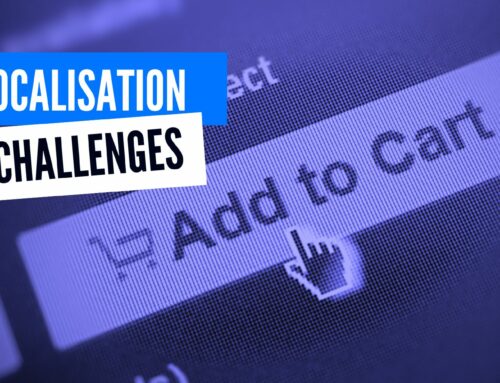Think of globalisation and localisation testing and it’s easy to imagine something like Google Translate.
Of course, Google Translate is clever. But it doesn’t quite capture the context behind languages and cultures and users are likely to end up feeling “lost in translation”.
The difference is, globalisation and localisation testing leave no gaps for interpretation. In fact, this type of software testing doesn’t just capture what worldwide audiences think and feel about your products, it ensures you find meaningful ways to connect with them too.
Let’s explore globalisation and localisation testing further…
What is localisation testing?
Localisation testing allows you to verify software behaviour, accuracy and suitability for specific locations and regions. What’s more, there’s no cap on how far you can go either; it could be targeting a particular city to an entire country. Essentially, this testing method assesses how the software application works for users in different locations.
What’s the difference between globalisation and localisation testing?
Essentially, the big difference between globalisation testing and localisation testing is that the former focuses on the application’s worldwide capabilities, whilst localisation deals with a specific subset of users in a given culture or locale.
Why is localisation testing important?
Localisation testing is important because it helps ensure your product looks and feels natural for target audiences everywhere – not just at home.
At the end of the day, every customer wants to see their local knowledge, culture and standards reflected in your website or software product – that’s how you create meaningful connections with them.
But you’ve only got a few seconds to make a good impression.
Provide an unfamiliar or, worse still, inauthentic experience in that time? Well, your users are likely to bounce and look elsewhere.
The bigger story is that if enough customers are put off, it’s likely to undermine your brand’s credibility and sabotage your chances of global growth. To resonate, you’ve just got to speak the same language.
But localisation testing isn’t just about checking translations for global audiences. That’s just one of many important aspects of the process.
In reality, it goes so much deeper than that.
What is involved in localisation testing?
At Digivante, we tackle localisation testing in two cycles. In the first, we write and execute a number of detailed test cases which cover all of the key journeys a customer could take. Not only that, but we also perform a comprehensive exploratory test to capture anything outside of those parameters too.
The second cycle is a rerun, testing any issues that occurred in the first.
Here’s what’s involved in a little more detail:
Writing test cases
In order to cover everything, it’s important to write detailed test cases. Covering every set of actions that could occur when your product, site or app is in use, these simulate real-world scenarios.
Test cases could cover everything from functionality, e.g. spelling, grammar and cultural issues that may arise in different contexts, to usability aspects. The latter is used in order to gain more detailed, qualitative feedback.
Essentially, the localisation testing process can be broken down into three main sections. Its comprehensive testing techniques include:
- Functionality – designed to help you uncover issues like typos from translation and any aspects of your tone of voice that feel jarring for non-native speakers.
- User interface – looking for any cracks in the code. Essentially, it’s much the same as standard usability testing – but applied to your target language.
- Regression – testing to ensure that your new localised version is still behaving as it should be. Less cosmetic than the other tests – but just as important.
Functionality testing the content
This part of localisation testing focuses on finding linguistic and cultural inconsistencies in your content. It covers everything from spelling, grammar and punctuation to language inconsistencies and tone irregularities – the stuff that an automated translation tool can’t capture. Testers will also check other regional differences. Things like:
- Number, date and time formats
- Currency format
- Phone and address formats
- Units of measurement
Functionality testing example
We (Digivante) provided in-depth localisation testing for a global manufacturer with an eCommerce site; one that had to cater for audiences from 11 different European countries. It was crucial for our client to get things right as there are so many subtle differences between even similar dialects. For example, both Switzerland and Belgium have specific idiosyncrasies to adopted languages which were very important to make the customers feel they are being treated in a unique way.
In order to help, we first used an automatic translation tool across all local websites. This translated the content from English into all relevant languages.
Next, we enlisted the help of testers who were fluent in each of the languages. They found 1025 issues, including:
- 450 missing translations
- 200 problems with punctuations
- 60 spelling mistakes
- 60 grammar errors
On average, 85 issues were found on each website (with a high of 156 and a low of 64 issues).
But as we mentioned before, localisation testing extends far beyond checking translations.
Usability testing to find all the cultural differences
OK, getting the intricacies of language and regional dialects down is crucial, but it’s just one factor that can impact the user experience. For example, changing scripts or the length of strings can interfere with the UI design. Text may have worked inside the layout before but now it’s translated, it could end up overflowing outside your fields. Along with text fields, usability testers can check things like pop-ups, notifications and other graphical elements are still working correctly.
At Digivante, we brief our international QA community testers to assess context, visual and multimedia content on your website or app – along with the copy.
Don’t forget that web content varies around the world. For example, Arabic customers would expect language to be read from right to left on a website. And this would obviously have an effect on the user interface.
But it’s not just words that can cause issues.
Use the same images across multiple sites and they might end up being inappropriate or unrepresentative of the local environment. Localisation testing can nip any potential issues in the bud – long before they become a problem.
Usability testing example
One of our clients is a consumer goods company with locations in Australia, Canada and the US. However, when the company was first expanding globally, it had no physical offices abroad – not to mention little to no knowledge of the customer base.
To help, we ran a detailed usability study with real customers. This feedback helped them understand expectations around things like tax, preferred payment systems, delivery methods, timescales and costs.
Delivery information is an important factor that’s all-too-often overlooked. Take Canada for example. In a large territory like that, a two-day delivery window is appropriate for a big city, e.g. Toronto. However, it’s entirely unrealistic for a mountain destination like Banff. Including usability testing into your localisation strategy ensures crucial details like this are never missed.
At this stage of localisation testing, it’s time to fix any flaws you’ve found. After that, retest everything to ensure they’re all working correctly.
However, that’s not quite the end of the process.
Regression testing to double-check everything
The issues may have been found but fixing them can, unfortunately, create new problems. That’s why we recommend regression testing the rest of the code as well.
It’s also a good idea to carry out regular localisation testing against the live website or app. Because new content will likely be added over time. Unfortunately, this can quickly undo all that good workaround spelling, grammar, context etc.
Sure, this can feel like a time-consuming process – but we can’t overstate its importance.
Regression testing example
We’re working with an international retailer with target markets in Denmark, Spain, New Zealand, Australia, Norway, Sweden and Finland. Our testing focused on a variety of country-specific retail differences, e.g. payment methods, delivery methods, content, etc. The thing is, the codebase was shared across the company’s multiple websites too. So if one change was made, it was likely to have an impact somewhere else as well.
But in this instance, a single round of testing isn’t enough. To keep things ticking over properly – and to coincide with a busy live release schedule – we carry out monthly regression testing.
If this feels like overkill, our testing team found an average of 10 issues per country. And as this is a well-known brand with a very strong reputation, so making sure these issues don’t see the light of day is of paramount importance.
But this isn’t the only way localisation testing can benefit your business.
Ad-hoc opportunities with localisation testing
Global localisation testing can continually support your business – even after your product, app or site has gone live.
Have you got a hardware device that needs testing physically or some other ad-hoc request? No problem. With a global pool of professional testers and real users at our disposal, we can take a hands-on approach.
For example, Digivante is able to send testers to a certain country’s city centre to test a phone signal. Alternatively, we could dispatch our team to a specific car park to sign in and out of a parking app. We can even arrange real-world testing of shipping, returns and refunds processes in different locations.
But that’s not the only benefit of working with us.
What are the benefits of globalisation and localisation testing with Digivante?
True global coverage
Local insights are key when designing software for global audiences – but getting them isn’t easy.
If you go it alone, that is.
At Digivante, we provide expert localisation testing – but on a global scale. Our community of testers spans 149 countries around the globe. We select native speakers and citizens to represent any local audience – so you don’t have to.
Working alongside you
Managing testing resources can be tricky.
If you employ a full team of in-house testers, there’s always the worry that they may not be fully utilised. But hold back from hiring and you can bet you’ll end up being hit by problems from not having those extra pairs of eyes to QA.
So, what’s the answer?
It’s simple: augment your team.
Digivante’s test leads or analysts can be deployed into your team with access to our full breadth of testing services, whether it’s a standalone project of localisation testing or becoming an ongoing asset in your agile sprints.
As well as being cost-effective and flexible, this approach has other benefits too.
Real-time insights
The difference with Digivante is that we work with product owners on translation and context during the development process – not just when the project has been completed. So this means we can advise with real-time insights about particular geographies and audiences as we find them. Consequently, product owners can make adjustments during sprint cycles – as opposed to having to go back and make time-consuming changes to the requirements afterwards.
And they’ll always know exactly where they are.
That’s because we moderate all of our findings and summarise them clearly. This approach to reporting ensures your team always has actionable insights for every local audience.
Conclusion: creating natural experiences (in context)
Whatever your business is, customers will always choose products that resonate with them on cultural and personal levels.
In fact, a recent survey of 8,709 consumers in 29 countries revealed that 76% prefer purchasing products with information in their own language.
So it makes sense that the same would go for using websites and software too.
Businesses that invest in localisation strategies are not only promoting awareness of global diversity, they’re demonstrating to their customers that they care about their individual needs and preferences. And by deploying comprehensive global localisation testing, they can arm product owners with the insight they need to create the types of personal experiences customers are looking for.
So, don’t leave your users lost in translation. Use localisation testing to give them the appropriate experience for their context.
Looking to extend the reach of your software product or services into international markets? Our global community of experts are trained in a wide range of testing techniques.





